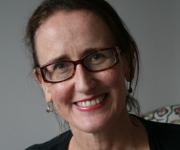FOR decades stem cell research has offered the tantalising prospect of potentially transformative treatments for conditions as varied as macular degeneration, Parkinson disease and type 1 diabetes.
At the same time, there are few areas of medical research that have generated as much controversy — media stories about “three-parent babies” and “human-animal hybrids” illustrate that.
Much of the coverage on these breakthroughs raises perfectly valid ethical considerations.
Is it OK to create an embryo using genetic material from three individuals? Should we be able to combine human and animal genetic material and, if so, under what circumstances? And then there are the more longstanding questions about the acceptability of using human embryos in research, especially the “spare” embryos created through assisted reproductive technology.
A paper by two Australian researchers published in Nature last week acknowledges these issues and argues researchers need to be ahead of the game when it comes to ethical debates around stem cells.
“To ensure that rational discussion among scientists, policy-makers, regulators and the public precedes the formulation of regulatory policy, individual researchers should try to avoid confronting the public with controversial scientific leaps out of the blue”, write Professors Martin Pera and Alan Trounson.
Professor Trounson, who now heads the California Institute for Regenerative Medicine, was one of the pioneers of in-vitro fertilization (IVF) technology in Australia in the 1980s and he is no stranger to these kinds of debates.
Back in the early days of IVF, private detectives apparently went through his garbage and his home was graffitied with accusations of murder.
What he found then — and he believes this will also happen with stem cells — is that the controversy faded away once people began to see the results of the research.
“As soon as [we] started to get large numbers of babies, the feeling in the community was dramatically different to what it was before that”, he told the ABC a few years ago.
Stem cell researchers perhaps need to be able to point to people with spinal injury walking again, or those with macular degeneration regaining their sight, if they are to win broader public support.
But they do also need to be active participants in public debate, as these authors argue. After all, even the most gung-ho researcher would probably acknowledge there should be some ethical boundaries around this kind of research.
It looked at one stage as though new techniques for deriving pluripotent stem cells from adult tissue might resolve some of the controversy by doing away with the need for embryonic material.
That may eventually prove to be the case, but we still don’t really know whether the adult cells have the same therapeutic potential as the embryonic ones.
On top of that, this is an area that will, pretty much by definition, continue to throw new ethical conundrums at us as the technology develops.
Would it be acceptable to treat a woman’s infertility by creating eggs from her own stem cells? Would we have the same approach in a postmenopausal woman?
And, in relation to those three-parent babies, would our response change depending on whether the aim was to prevent genetic disease in the child or to allow three people to share the status of biological parent?
Calm, well informed debate is our best hope for finding good answers to such curly questions.
Scientists’ voices are certainly not the only ones that should be heard here, but these authors are right to point out that we will all be poorer if the research community fails to have its say.
Jane McCredie is a Sydney-based science and medicine writer.

 more_vert
more_vert